Noise Output
Fan Full Speed, 75% & 50%
Noise is not that high at full speed, compared to other cards, at close to 48.1 dBA. At 75% fan speed, it is at 38.5 dBA; at 50%, it drops notably lower to 24.2 dBA.
Idle, Multimedia & Rendering
Thanks to the fan-stop feature, most graphics cards are dead quiet at idle and multimedia. The Galax RTX 5070 Ti is also silent in rendering.
Gaming
During short gaming periods, the Galax card is silent.
Furmark
In Furmark, where the card is stressed, the output noise is above 29 dBA, which is high enough.
Frequency Plots
30% Fan Speed (Min Fan Speed)
- Peak Frequency: 1 KHz
39% Fan Speed (Rendering – AVG RPM)
- Peak Frequency: 1 KHz
46% Fan Speed (Rendering – 1% High PRM)
- Peak Frequency: 1 KHz
47% Fan Speed (Gaming RTX OFF – AVG PRM)
- Peak Frequency: 1 KHz
51% Fan Speed (Gaming RTX/DLSS/FG ON – 1% High RPM)
- Peak Frequency: 1 KHz
52% Fan Speed (Gaming RTX Off – 1% High RPM)
- Peak Frequency: 1 KHz
55% Fan Speed (Furmark – AVG RPM)
- Peak Frequency: 1 KHz
59% Fan Speed (Furmark – 1% High RPM)
- Peak Frequency: 1 KHz
68% Fan Speed
- Peak Frequency: 630 Hz
75% Fan Speed
- Peak Frequency: 1.25 KHz
100% Fan Speed
- Peak Frequency: 1.6 KHz
Signal Recordings
I have recorded the signals shown above, but please keep in mind that I’ve enabled Automatic Gain Control (AGC) to do so to make it easier for you to reproduce them. The provided recordings are only offered for aural identification purposes.
30% Fan Speed
39% Fan Speed
46% Fan Speed
47% Fan Speed
51% Fan Speed
52% Fan Speed
55% Fan Speed
59% Fan Speed
68% Fan Speed
75% Fan Speed
100% Fan Speed
Pages:
- Prologue & Technical specifications
- NVIDIA’s Key Technologies
- Box & Contents
- Part Analysis
- Specifications Comparison
- Test System
- Game Benchmark Details
- Raster Performance
- RT Performance
- RT Performance + DLSS/FSR Balanced
- Raytracing Performance + DLSS/FSR Balanced + FG
- DLSS/FSR Balanced (No RT)
- DLSS/FSR Balanced + FG (No RT)
- Relative Perf & Perf Per Watt (Raster)
- Relative Perf & Perf Per Watt (Raster + DLSS/FSR)
- Relative Perf & Perf Per Watt (RT)
- Relative Perf & Perf Per Watt (RT + DLSS/FSR)
- Relative Perf & Perf Per Watt (RT + DLSS/FSR + FG)
- Rendering Performance
- Operating Temperatures
- Operating Noise & Frequency Analysis
- Power Consumption
- Clock Speeds & Overclocking
- Cooling Performance
- Epilogue

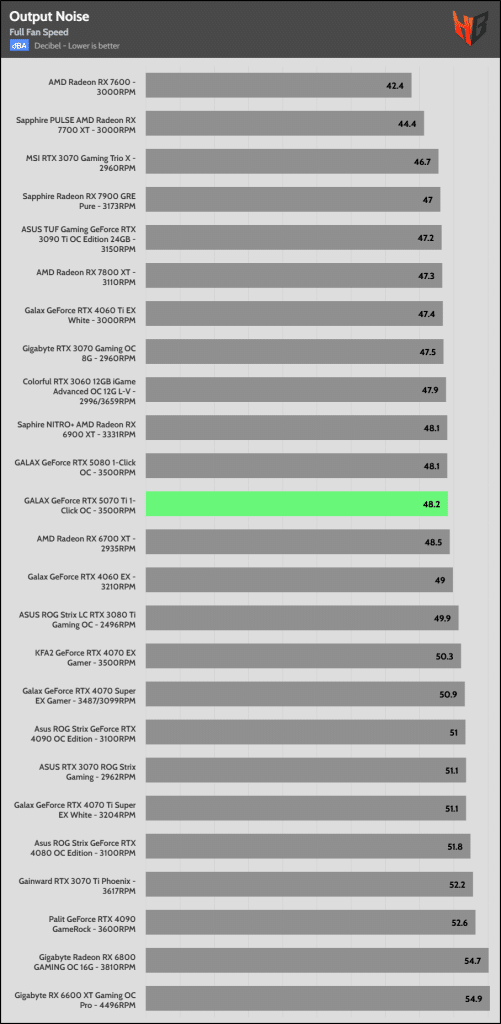
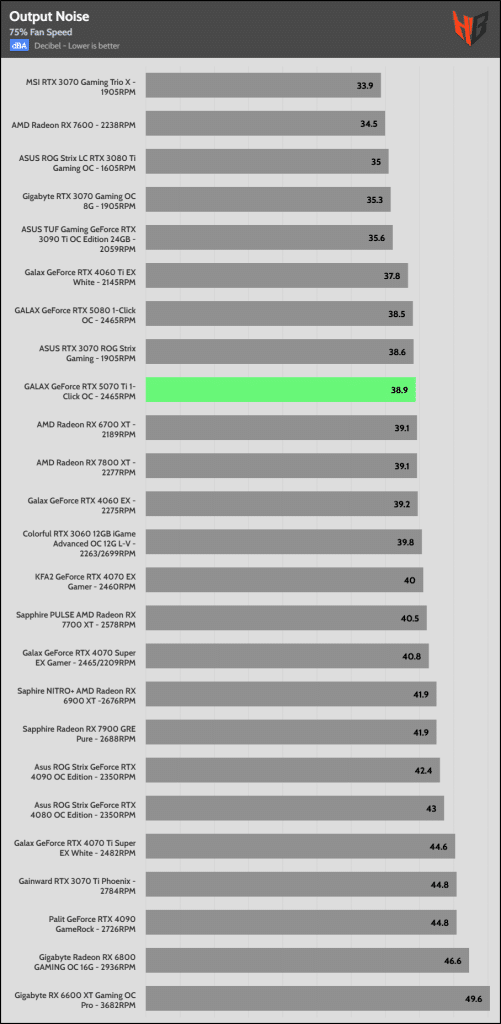
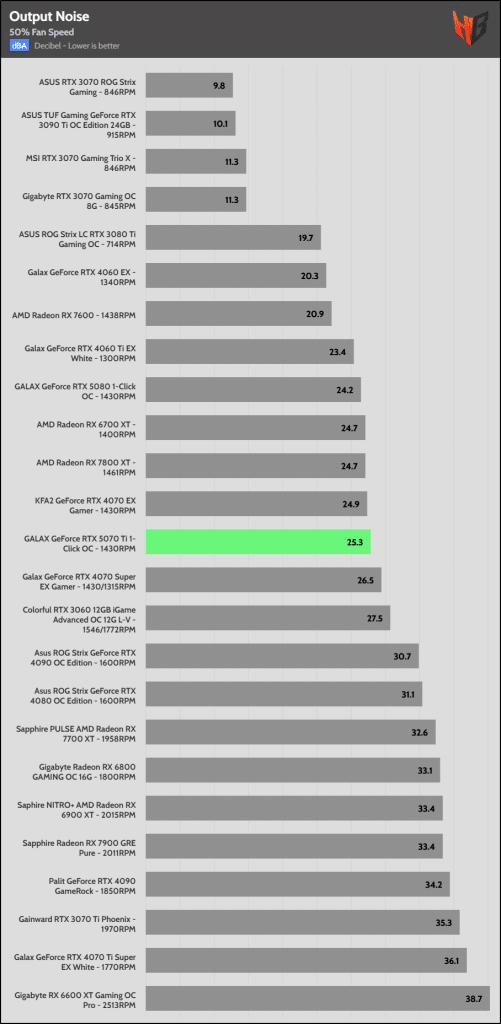
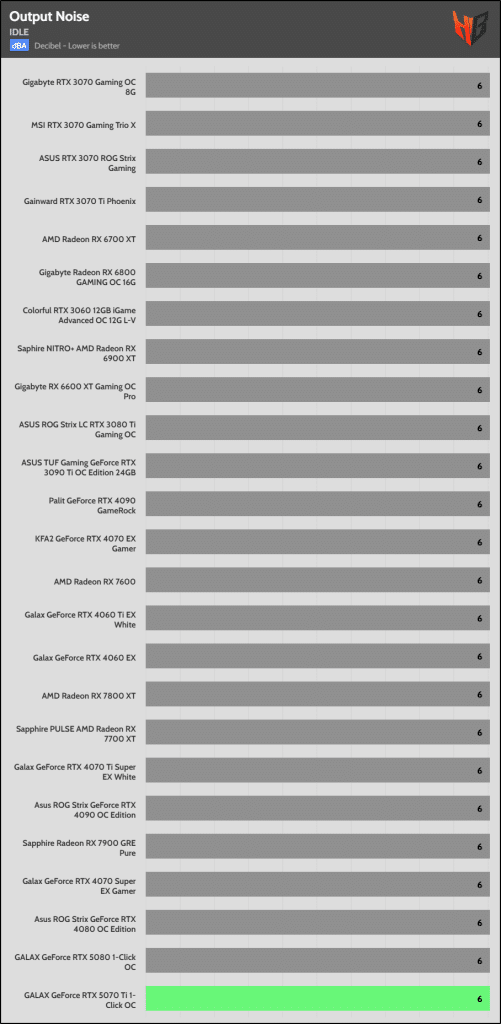
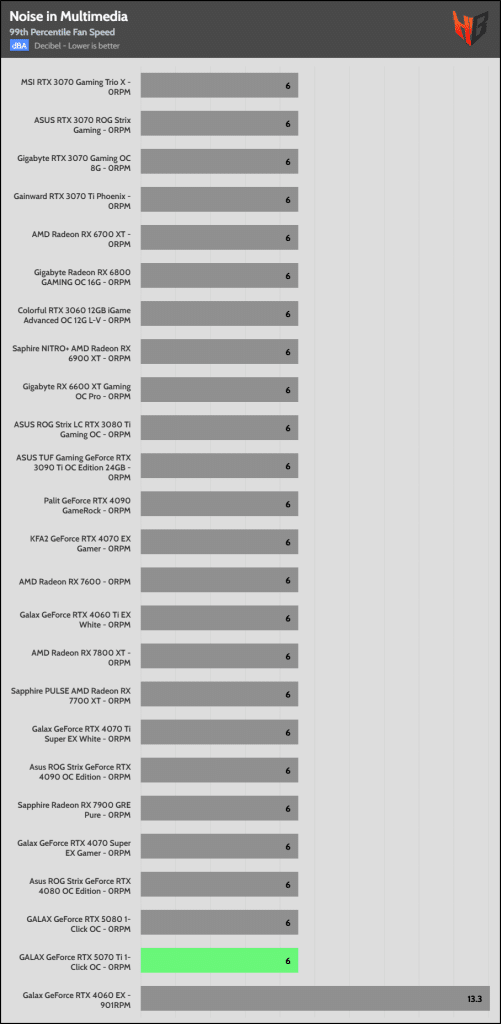
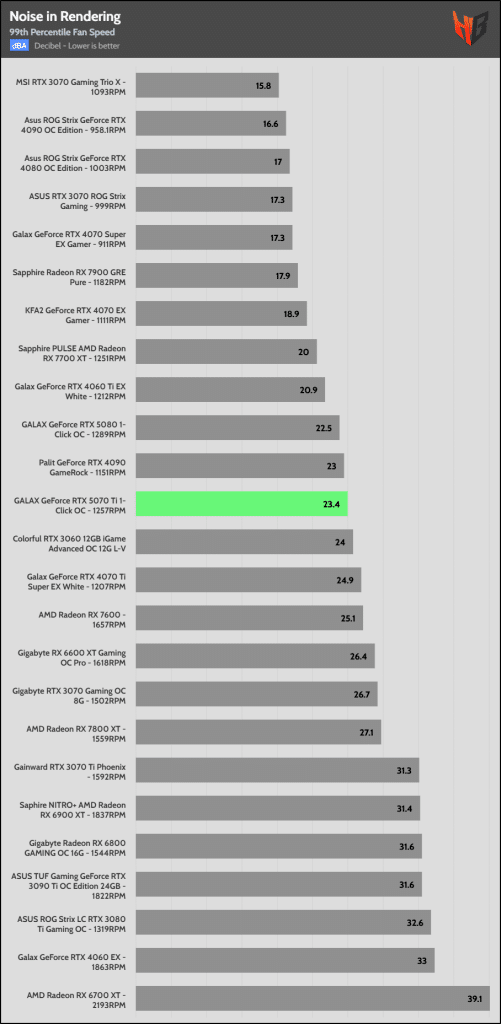
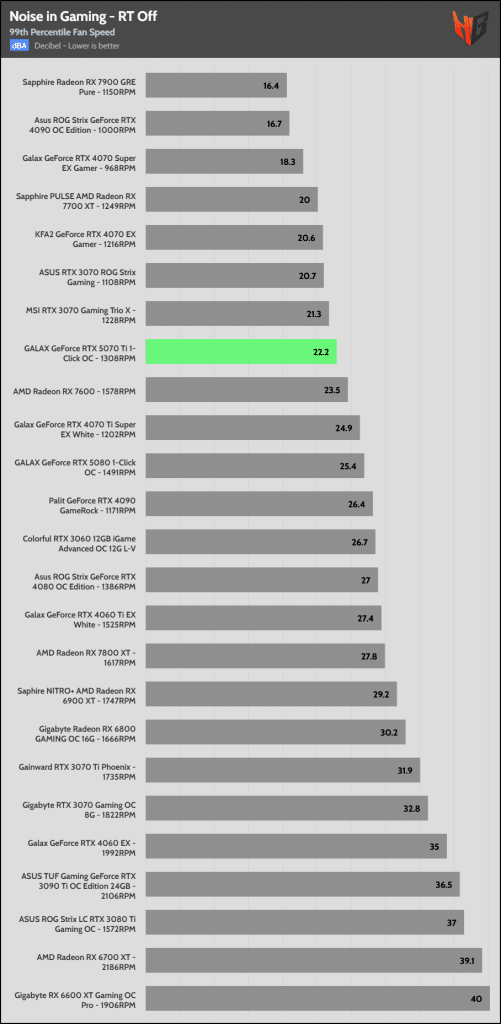
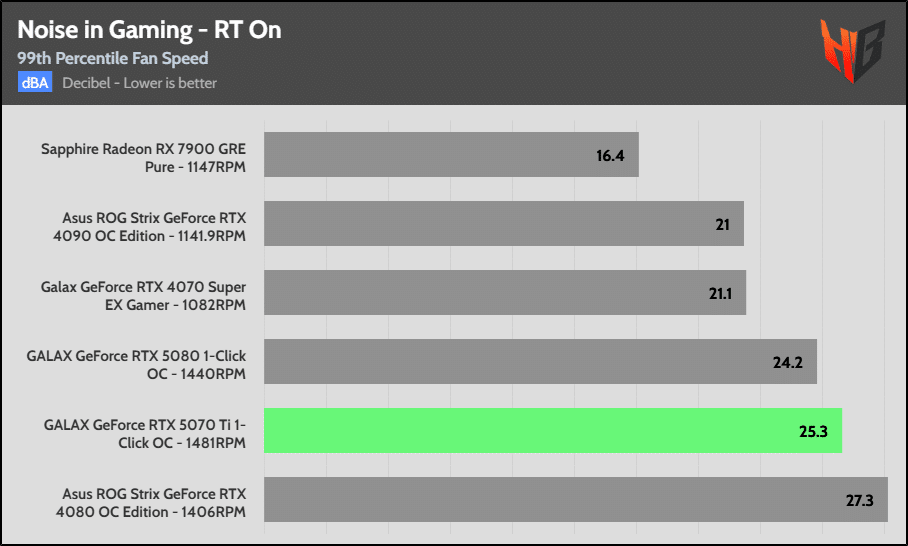
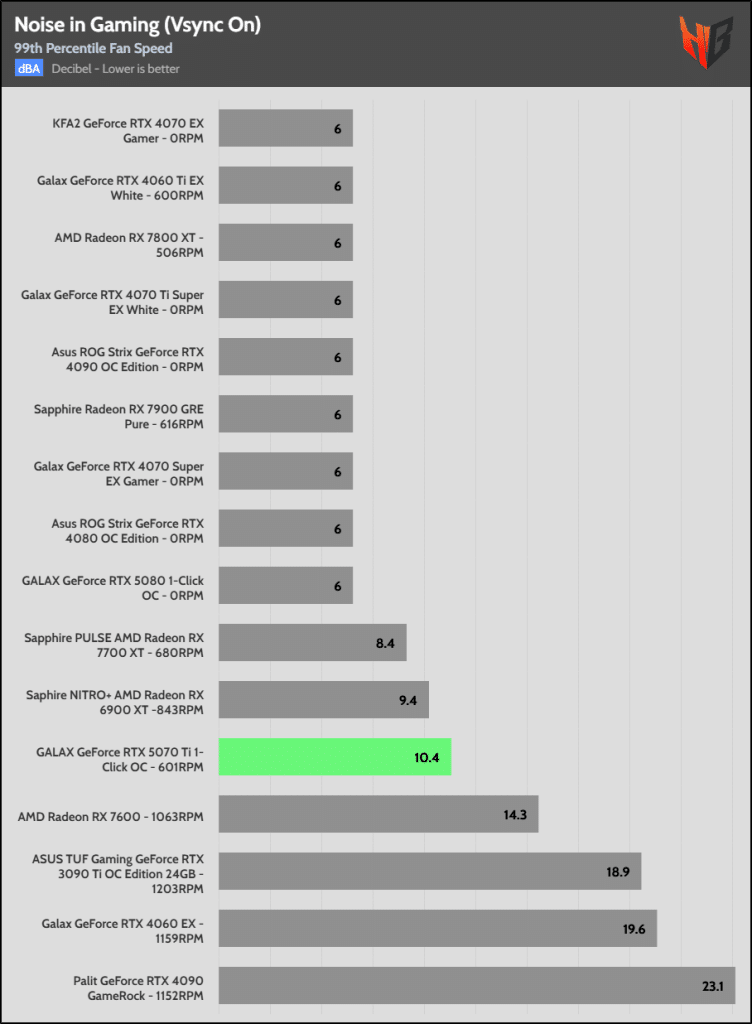
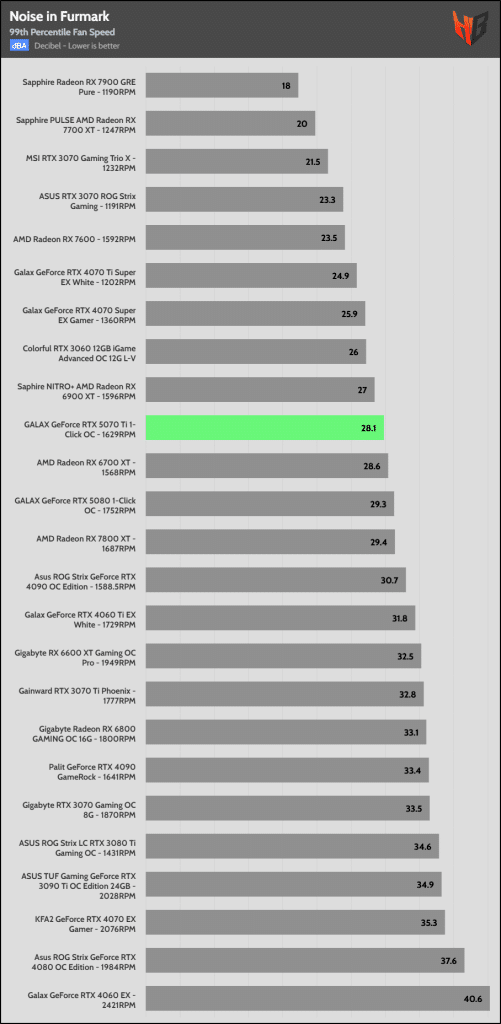











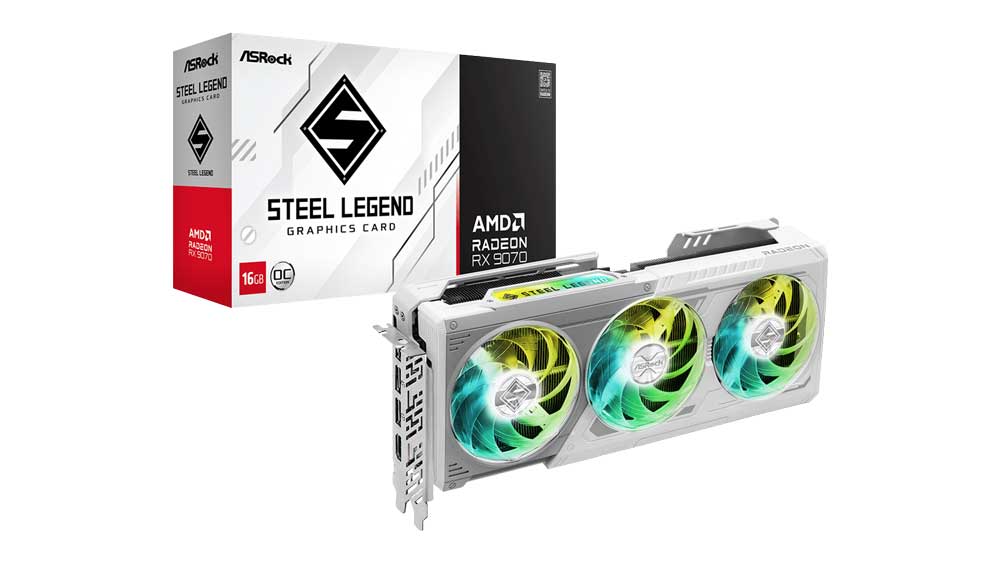

Thanks for your detailed review. I bought a similar Galax card called the Blade OC in China. Despite putting it to the same settings as you in GPU tweak (and the GPU clock dial even going slightly higher to 2997) I’m finding that the max core clock I can get in TimeSpy Extreme GT1 is just under 3000MHz. Do you think this is just silicon lottery because my card seems to be about 3-5% behind every review of the Galax One click OC I can find (can’t read Chinese reviews of the local Blade OC version)?
Hi! OC is pure silicon lottery I am afraid.
OK. Cheers.